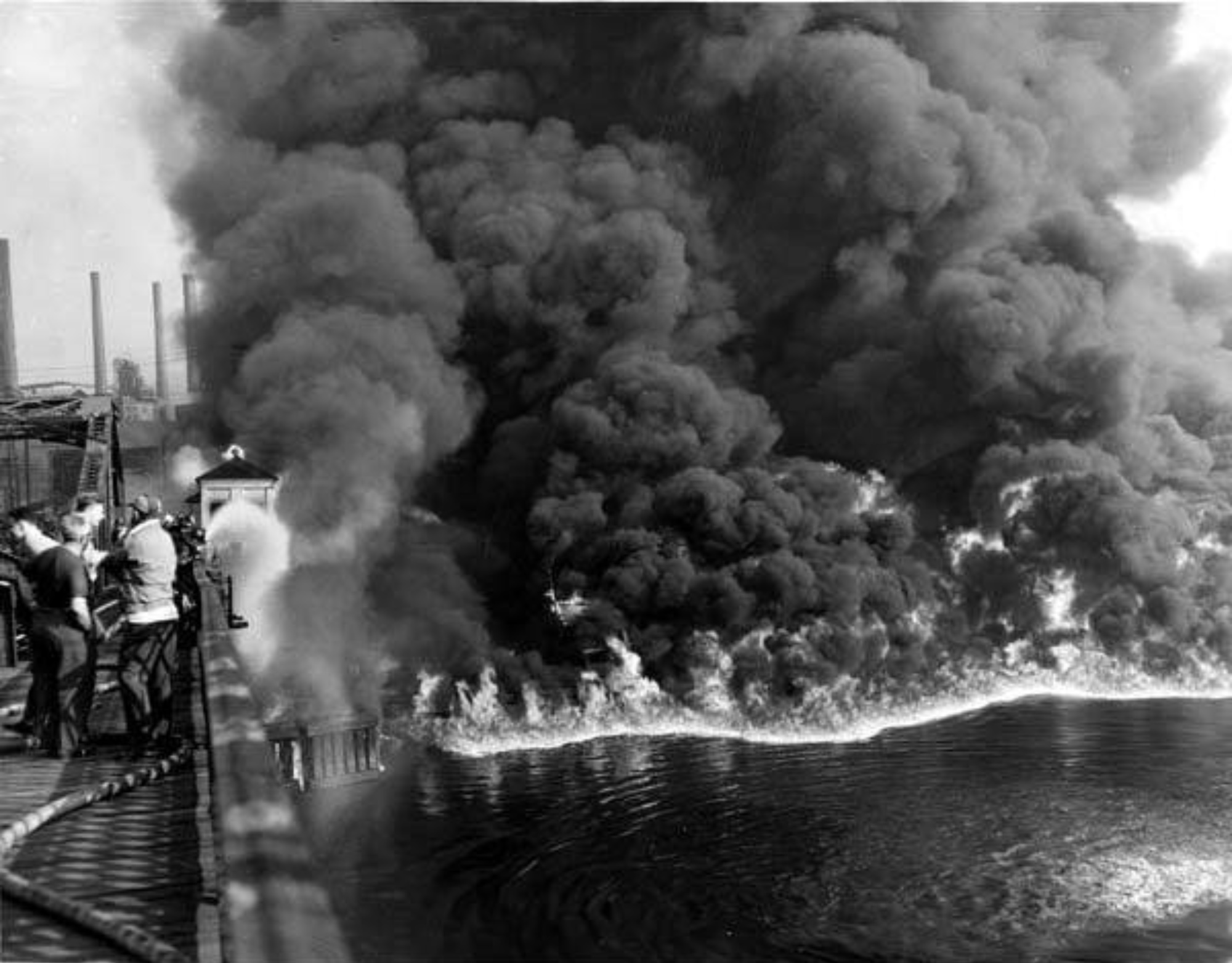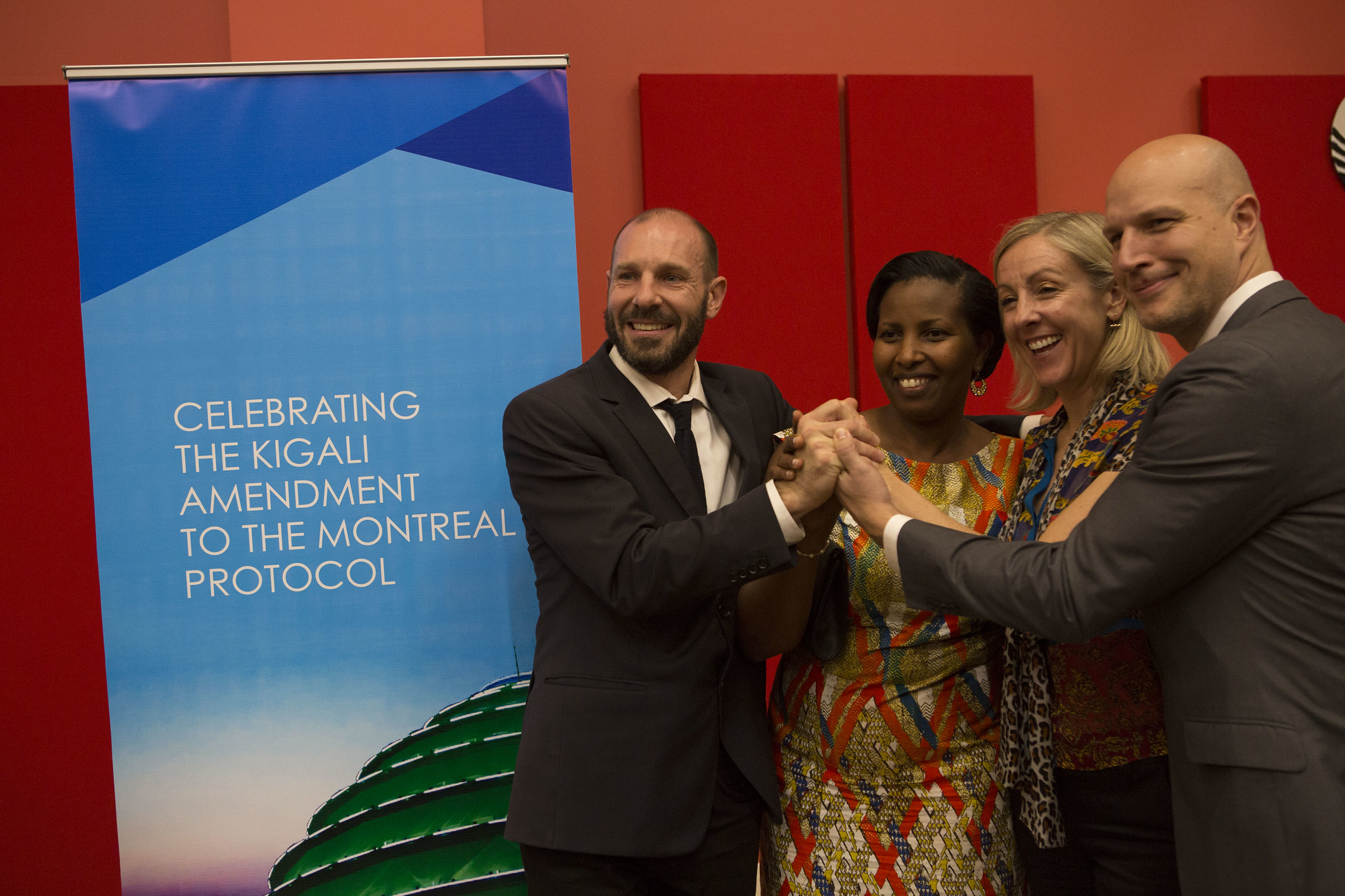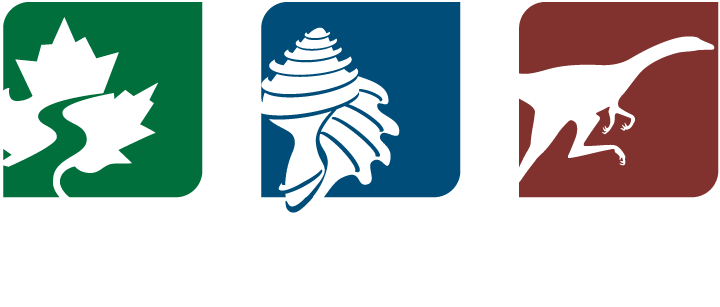Chapter Contents
- Apocalyptic Tales of Climate Change
- Use of Language and Perspective in Teaching Climate Change
- Hope and Optimism
- Considerations of Fear, Anxiety, and Mental Health
- Apocalyptic Prophesies Versus Predictions of Climate Change
- Reality Check: A Personal Perspective
- Science Teaching Toward a Sustainable World
- Resources
Image above: Canva
At first blush, some of society’s previous environmental parables may seem to have been false prophecies in the sense that these tales of apocalypse did not become fully fulfilled. One reason, of course, is that some of these issues were resolved because people did something about them. As one relatively localized but well publicized example, certain rivers in the US caught fire a number of times in the 19th and 20th centuries, and they don’t anymore. The most famous example is Cleveland’s Cuyahoga, but it’s far from the only example. Generally, the water in US rivers, lakes and streams, and the air we breathe, are much cleaner than was the case a few decades ago. The environment in many heavily industrialized areas is less polluted than it was half a century ago. Littering has declined substantially, and in many areas municipal solid waste disposal rates are substantially down because recycling rates are up.


A global atmospheric example, the most comparable we have to controlling greenhouse gas emissions, is reducing chemicals—especially coolants such as chlorofluorocarbons (CFCs)—that deplete stratospheric ozone. Note that stratospheric ozone is not the same as tropospheric (ground-level) ozone, which is considered a form of pollution, forming from reactions between certain carbon compounds with nitrogen oxide. Ground-level ozone can irritate lungs, especially if there are pre-existing conditions such as asthma.
Ground level ozone is pollution. Stratospheric ozone is protective.
The stratospheric ozone layer absorbs ultraviolet light and thereby protects tissues of living organisms. In the 1980s it became established that the ozone concentration declined by over half its natural state during summers over Antarctica—this became known as the “ozone hole” (ozone also diminished in the Arctic and in temperate latitudes, but not to the same degree). By the 1980s an international agreement was made to freeze and then phase out CFCs. Once regulations of CFCs were put into place, ozone concentrations began to stabilize, and at the time of this writing, the ozone hole over Antarctica is showing signs of healing. Environmental issues can and do improve.

How did we clean up our act in these cases? In these examples, we responded to the scientific projections that were coming true before our eyes. We created laws and agreements to regulate what we were putting into our waters and into our atmosphere, and we changed cultural norms regarding acceptable ways to treat the environment.



